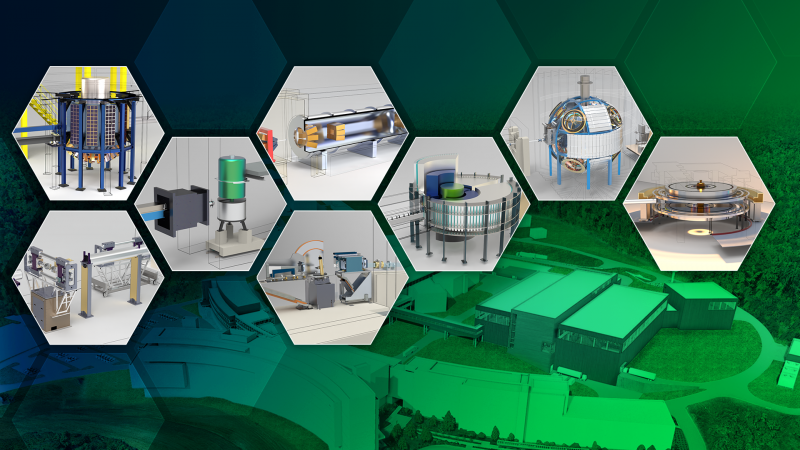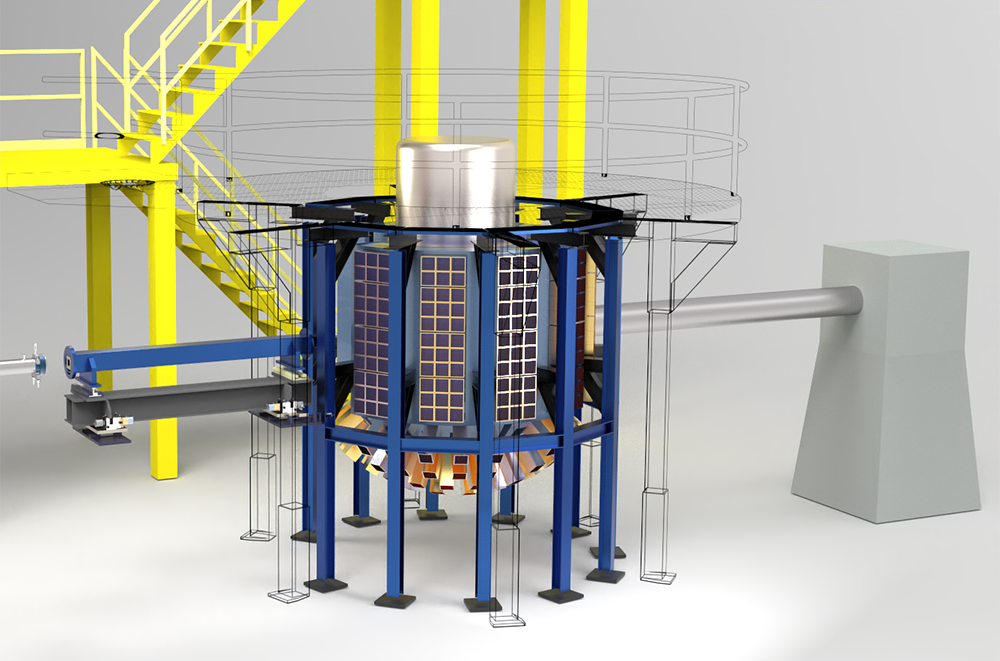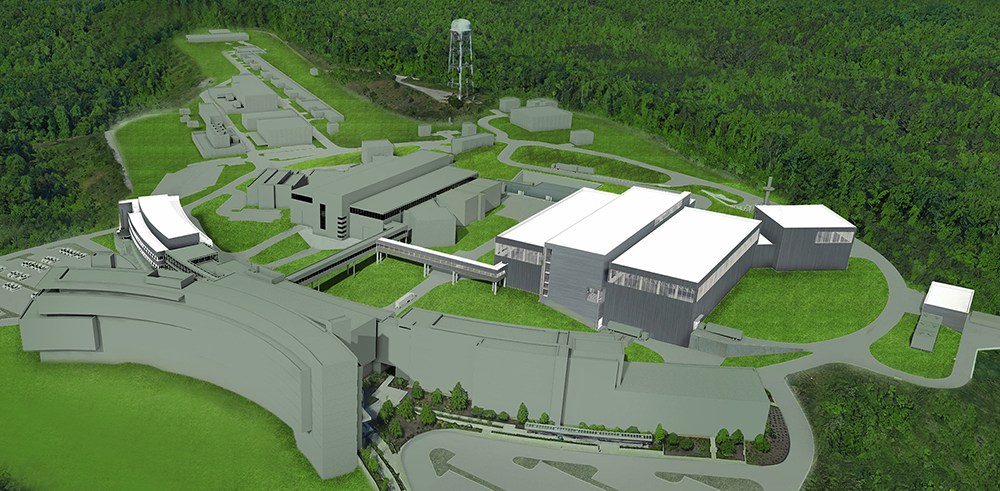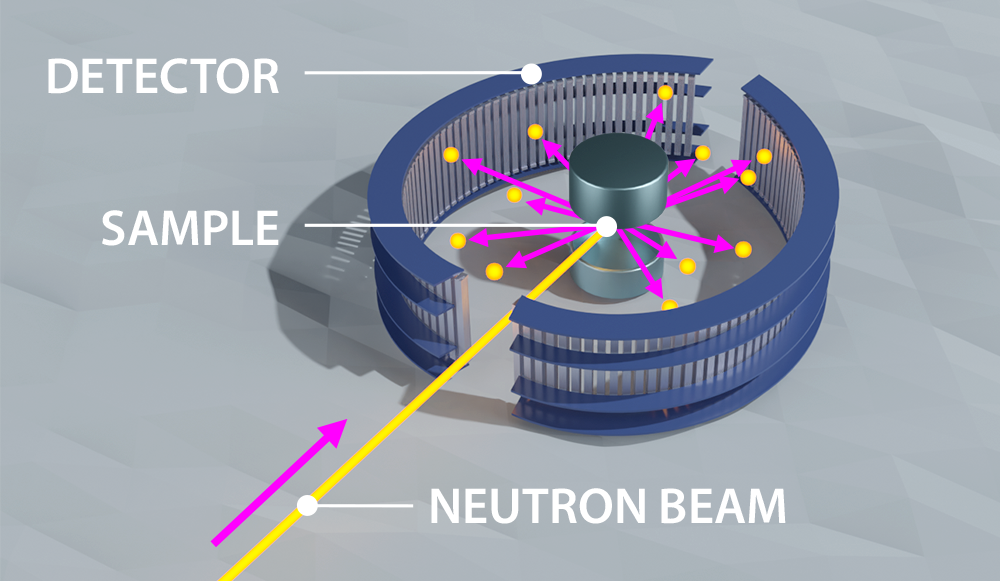To address emerging science challenges and advance the nation’s neutron science research capabilities, Oak Ridge National Laboratory is planning a major upgrade to its Spallation Neutron Source with the construction of the Second Target Station, or STS.
The project achieved a key milestone in July with selection of the eight world-class instruments to be built during the construction phase. Instrument selection involved the research community through the development of proposals evaluated by a committee of national and international experts. The chosen instruments will provide transformational new capabilities to advance materials research that supports the US economy with information that cannot be obtained using any other research method. Next steps for the selected instruments are physics optimization and preliminary engineering design.
“When the Spallation Neutron Source was completed in 2006, provision was made in the design for increasing the power of the accelerator and adding a second target station to address future scientific challenges,” said ORNL Director Thomas Zacharia. “The capabilities of the STS and its neutron research instruments are needed to be better prepared to address tomorrow’s needs for more powerful and reliable sources of clean energy, improved materials, faster electronics, and new vaccines and medicines.”
PIONEER is one of eight state-of-the-art instruments chosen for initial development at the Second Target Station, part of a major upgrade at the existing Spallation Neutron Source.
(Credit: Jill Hemman/ORNL)
The STS will draw thousands of users from national labs, universities and industry to address fundamental and applied science challenges and accelerate industrial innovations. Scientists will employ the unique properties of neutrons to develop materials and processes for biomedical science and public health, new clean and sustainable energy technologies, climate science and carbon neutrality technologies, national security and advanced manufacturing. The STS will enable innovative neutron experiments using smaller samples, which is a significant advantage in the early stages of developing a new material and for exploring new frontiers in materials at extreme conditions. This is a strength of the PIONEER instrument, illustrated in the figure above. The facility also will complement other ORNL capabilities, such as high-performance computing, and allow faster data collection.
The project will include site improvements, utility upgrades, new laboratory spaces and the Second Target Station in more than 350,000 square feet of new buildings. The STS will support the future addition of up to 14 more instruments for a total of 22 neutron scattering instruments. (Credit: Oak Ridge National Laboratory)
Why neutrons? The three-source strategy for neutron production
Neutrons are particles comprising more than half of all visible matter. When a beam of neutrons is aimed at a test sample in a neutron instrument, some of the neutrons interact directly with atoms in the sample and “bounce” away at different angles, like cue balls colliding in a game of pool. This technique is called neutron scattering. Scientists use special detectors to capture the scattered neutrons and methods to measure the energies and angles at which they scatter. The data collected helps reveal the positions, motions, and magnetic properties of atoms in materials ranging from liquid crystals to superconducting ceramics, from proteins to plastics, and from metals to magnets.
When a beam of neutrons penetrates a material, some of the neutrons are scattered away by atoms in the material. Detectors measure the angles and intensities of the scattered neutrons, allowing scientists to determine the atomic structure and dynamics inside the material.
(Credit: Jill Hemman/ORNL)
Neutrons enable scientists to see the internal structure of even dense, opaque materials, such as metals. Researchers use neutron scattering to determine the positions and motions of atoms in materials vital to many industries including transportation, aerospace, steel, defense, industrial materials, energy storage, data storage and biomedicine. The eight selected instruments will provide unparalleled capabilities for areas of national priority, such as next-generation materials for clean energy, carbon capture and energy storage.
The STS will complement ORNL’s two existing neutron sources—the First Target Station at the SNS and the High Flux Isotope Reactor—by providing “cold,” or lower-energy, neutron beams many times brighter than any other cold neutron source in the world.
The existing SNS and HFIR neutron facilities each year attract more than 1,000 proposals from the world’s top researchers from over 500 academic institutions, more than 70 companies, and over 90 scientific institutions. A scientific panel selects the most promising proposals through peer review. Scientists whose proposals are chosen can use the facilities and instruments free of charge in return for making their data and findings public. Once the STS is built, many more researchers will submit proposals to come to ORNL to conduct experiments on materials they can’t perform today.
Other countries are designing and building advanced neutron research facilities that will eventually eclipse existing U.S. capabilities. The STS will help maintain the nation’s global leadership in neutron science, fill critical gaps in materials research capabilities, and meet increasing user demand. The combination of three world-class neutron sources will provide a wider range of facilities at which to conduct experiments that leverage the unique properties of neutrons.
“The STS is needed to maintain U.S. leadership in neutron scattering research,” said ORNL’s John Haines, STS project director. Without the STS, the nation’s scientists from academia, industry, and the national laboratories would have, at best, limited access to overseas facilities, jeopardizing America’s ability to test and develop materials vital to our economy, public health and national security.”
Ken Andersen, ORNL’s associate laboratory director for Neutron Sciences, said, “I’m excited about the planned new instruments’ unprecedented capabilities and their promise to accelerate the pace of scientific discovery here at the SNS. While there is still a lot of work to do to develop, design and build the instruments, I’m confident that ORNL can bring to bear the world-class knowledge and expertise we have here to deliver the type of facilities and instruments the user community wants and needs.”
Instrument selection process, next steps
The final stages of the comprehensive STS instrument selection process featured an Instrument Review Committee of more than 20 distinguished science and technique experts from the US and Europe. Committee members reviewed 12 instrument concept proposals developed with strong engagement from the research community and technical support from ORNL neutron scientists and engineers. The committee evaluated each instrument according to defined criteria for scientific importance and impact, strength of the relevant user community, match to unique STS source characteristics, anticipated quality of the proposed instrument, and technical feasibility.
“The committee was impressed with the innovativeness and care that went into the proposals and the main finding of the committee was that all the instrument proposals would result in big steps in capability and scientific impact, making the important ranking task very challenging. It is very exciting to think that some or all these instrument concepts will become reality in the future," said Simon Billinge, professor of materials science and of applied physics and applied mathematics at Columbia University. He served as chairman of the committee.
The STS project will continue engaging the research community to be part of instrument advisory teams that will participate in design reviews, advise on science decisions and eventual selection of sample environments, and help plan for the commissioning and early science of the instruments.
The project reached a major milestone in November 2020 when the US Department of Energy officially gave the project Critical Decision 1 approval. CD-1 status affirmed the STS’s conceptual designs, cost and schedule range, and general acquisition plans, which allowed the project team to begin work on the next phases of design and development.
The STS project is supported by DOE’s Office of Basic Energy Sciences. For more information, visit the Second Target Station.
SNS and HFIR are DOE Office of Science user facilities. UT-Battelle manages ORNL for Department of Energy’s Office of Science, the single largest supporter of basic research in the physical sciences in the United States. The Office of Science is working to address some of the most pressing challenges of our time. For more information, please visit energy.gov/science.







